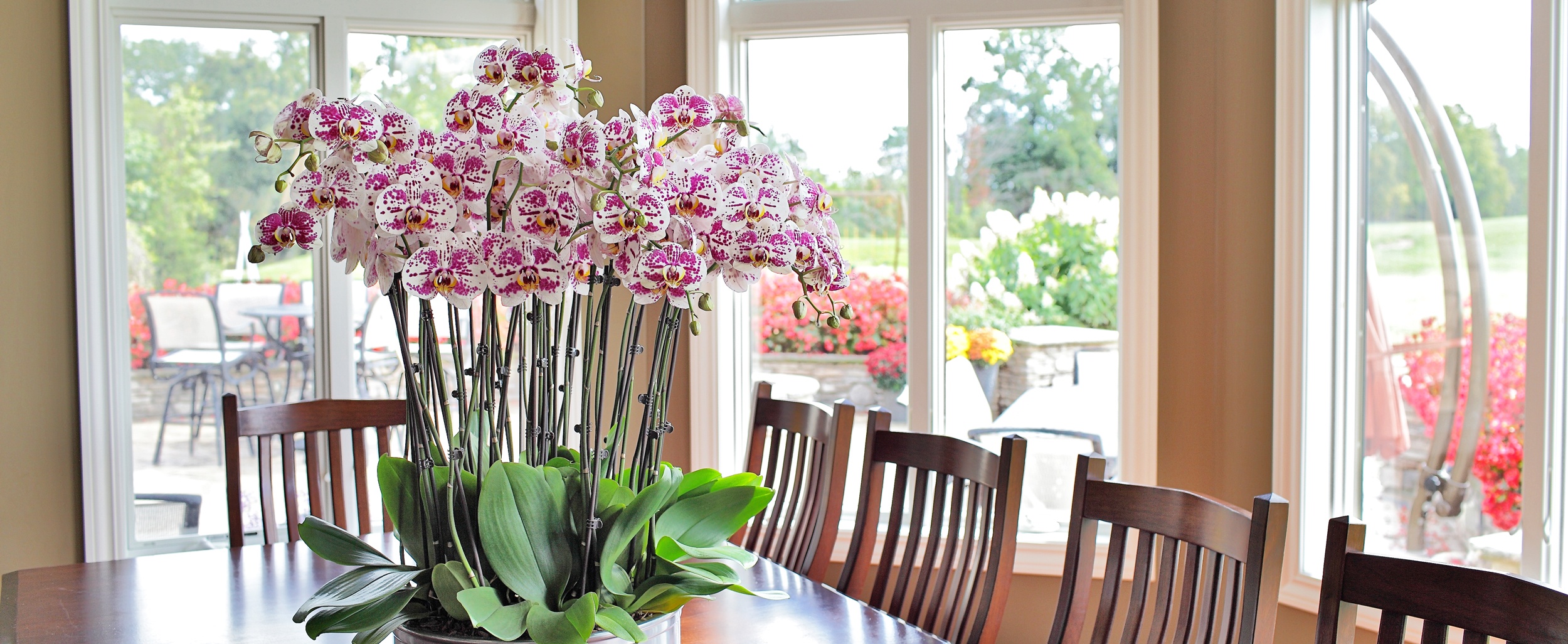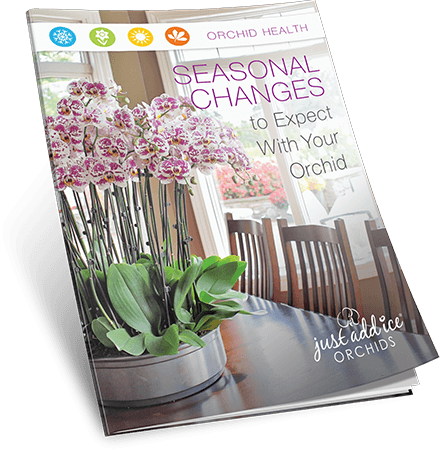
Phalaenopsis orchids love the bright, indirect light of most homes or offices. The same goes for temperature. Any temperature you’re comfortable at — as long as it’s not under 60 degrees — your orchid will enjoy, too.




Despite your orchid’s strength and persistence, there is such a thing as too much light. Just as your skin becomes red and painful after you spend too much time in the sun, your orchid can get burned by the sun, too. An orchid sunburn looks like a white spot surrounded by a dark ring. If your orchid’s blooms fall off prematurely, it could be a sign that it’s dehydrated from the sun’s rays. Be sure to check its roots to make sure it’s getting enough water.
Natural sunlight is a win-win—it’s good for you and your plants, so pull back the shades and let in the sun. To avoid the aforementioned sunburn, keep your plant in a north- or east-facing window, away from direct sun exposure. If you’re keeping your orchid in a room with south-facing windows, make sure it’s out of direct light, but still in a spot that receives plenty of sun.
Orchids like environments with 55 to 75 percent humidity. If you notice emerging flowers or leaves are deformed, this is a sign your orchid needs more humidity. You can increase humidity by running a humidifier, creating a humidity tray or using a spray bottle of water to mist your orchid.

As the seasons change, keeping your orchid healthy may require more vigilance because changes in temperature and air quality can affect the health of your plant. Learn how to best care for your orchid durring seasonal changes with this guide.
Copyright Just Add Ice® Orchids 2023